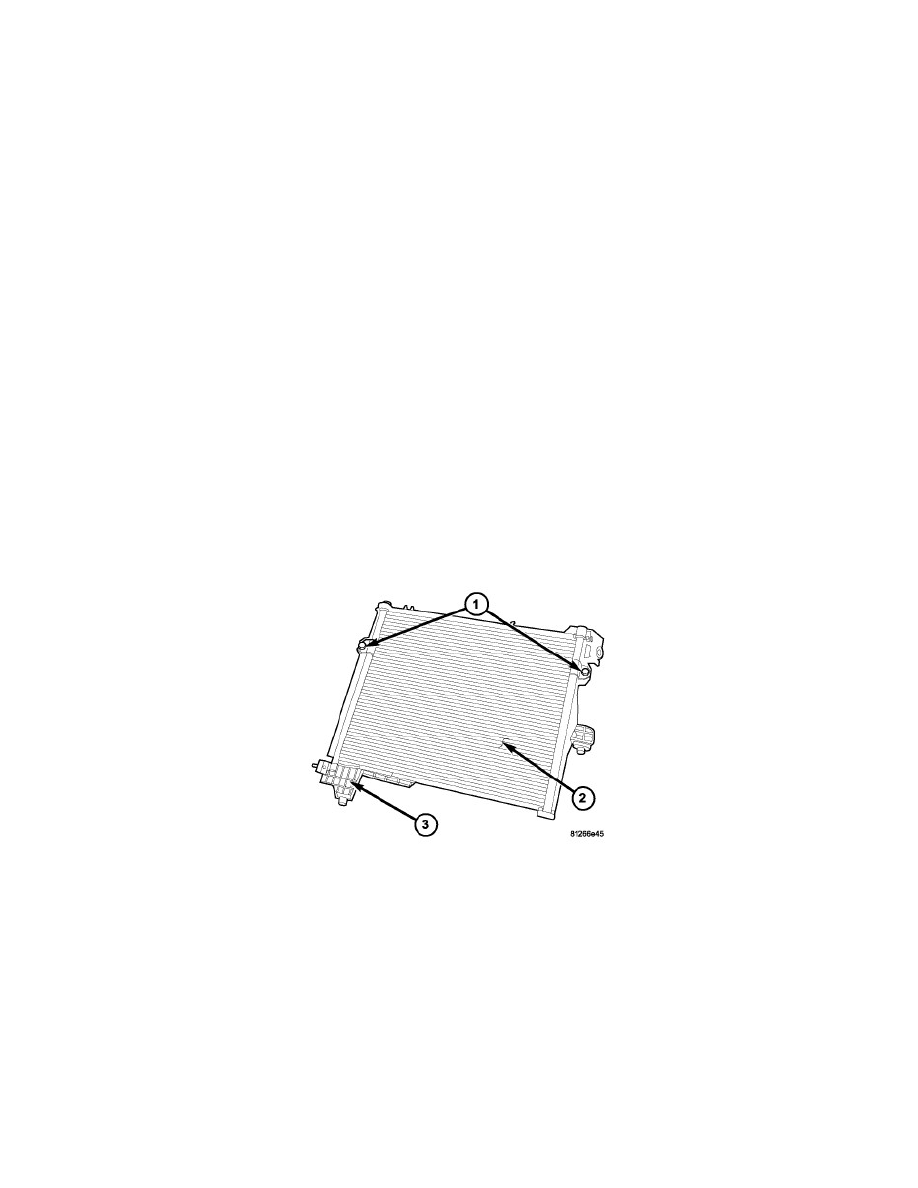Durango 2WD V6-3.7L (2009)

Condenser HVAC: Service and Repair
A/C Condenser - Installation
INSTALLATION
CAUTION: Be certain to adjust the refrigerant oil level when servicing the A/C refrigerant system See: Specifications/Capacity
Specifications/Refrigerant Oil Capacity . Failure to properly adjust the refrigerant oil level will prevent the A/C system from
operating as designed and can cause serious A/C compressor damage.
CAUTION: Always use ND-11 Polyester (POE) oil from Mopar(R) in Hybrid Electric Vehicle (HEV) models. Never use Polyalkylene Glycol
(PAG) oil in an HEV model. See Refrigerant Oil for more information.
CAUTION: Polyalkylene Glycol (PAG) oil can contaminate the refrigerant system of a Hybrid Electric Vehicle (HEV) and lead to A/C system
damage and failure. If the refrigerant recovery/recycling and charging equipment was last used on a non-HEV model, flush the
hoses of the equipment with a solvent approved by the equipment manufacturer before using the equipment on an HEV model, or
use refrigerant recovery/recycling and charging equipment designated only for HEV models by your service facility. See the
operating instructions supplied by the equipment manufacturer for proper use and care of the refrigerant recovery/recycling and
charging equipment.
NOTE: When replacing multiple A/C system components, refer to the Refrigerant Oil Capacities chart to determine how much oil should be
added to the refrigerant system See: Specifications/Capacity Specifications/Refrigerant Oil Capacity .
NOTE: If only the A/C condenser is being replaced, add 30 milliliters (1 fluid ounce) of refrigerant oil to the refrigerant system. Use only
refrigerant oil of the type recommended for the A/C compressor in the vehicle.
NOTE: Replacement of the refrigerant line O-ring seals and gaskets is required anytime a refrigerant line is disconnected. Failure to replace
the rubber O-ring seals and metal gaskets could result in a refrigerant system leak.
NOTE: Be certain that each of the radiator and condenser air seals are installed in their proper locations. These air seals are required for the
A/C and engine cooling systems to perform as designed.
1. Position the A/C condenser (2) into the condenser fan shroud (3).
2. Install the two bolts (1) that secure the A/C condenser to the condenser fan shroud. Tighten the bolts to 5 Nm (45 in. lbs.).
